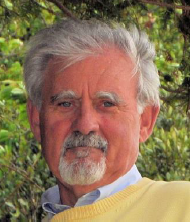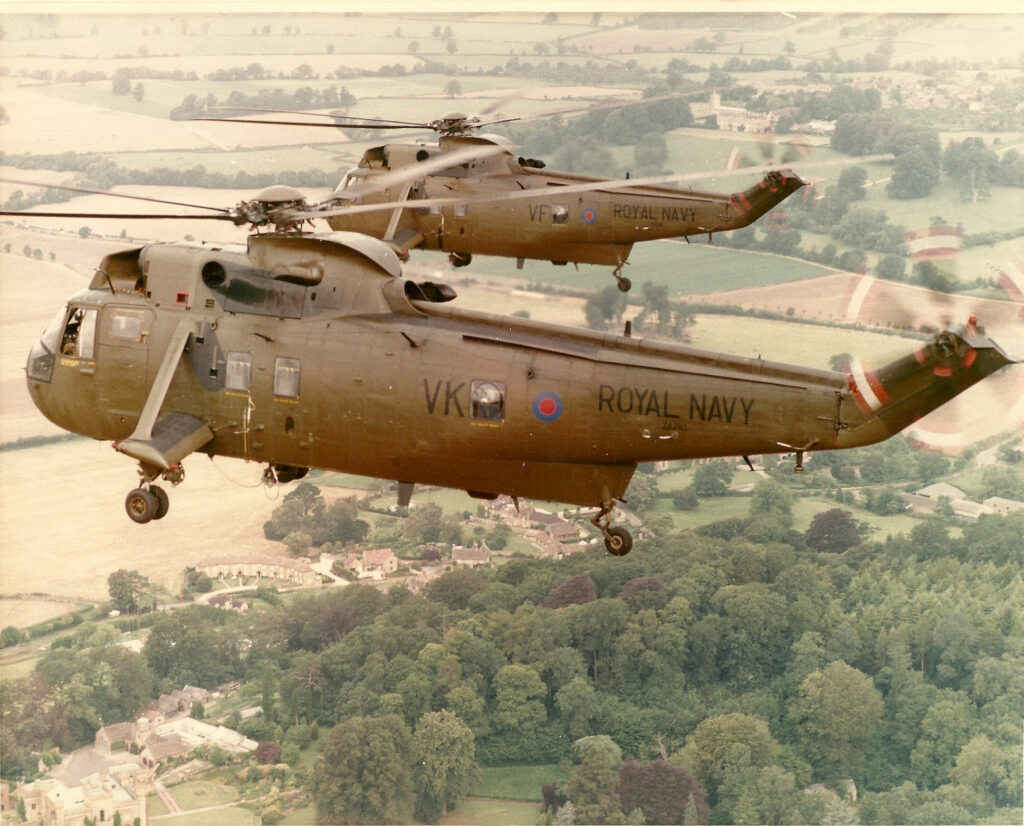
TACAN

Robert Curtis

Enjoy our stories?
Join our Readers List for updates.
SHORT BIO:
Robert F. Curtis gained entry into the Army’s Warrant Officer Candidate program where he learned to fly, starting him on the path to a military career as an aviator in the Army, National Guard, and Marine Corps, and as an exchange officer with the British Royal Navy. After service in Vietnam he attended the University of Kentucky, graduating with honors with a bachelor’s degree in political science. Later, while serving at Naval Air Systems Command in Washington, D.C., Robert completed a master’s degree in procurement and acquisition management at Webster University. Robert is an FAA certified commercial pilot in both helicopters and gyroplanes. His military awards include the Distinguished Flying Cross, Bronze Star, Purple Heart, and twenty-three Air Medals
TACAN
The only difference between a fairy story and a war story is how they begin. A fairy story starts out, “Once upon a time, in a land far, far away…”. A war story begins, “Now this is no shit, there I was…”. Other than that, there is no difference. And both, by the way, are equally true.
Now this is no shit, there we were, two SeaKings from 846 Squadron, in deepest Norway, doing what 846 Squadron does in Norway in the winter, i.e., bumbling about trying not to run into things, like say, mountains, masts, etc., but the snow was coming down too hard to continue. Spotting an open area near some Norwegian houses we plopped the aircraft down in the snow and settled in to wait for the weather to clear. After we had shut the aircraft down, I noticed my aircrewman, one Splash Ashdown, was missing.
Following the foot prints I saw him knocking on the door of one of the houses and overheard him say (in his best Russian accent), “Dis Norway? You see cruise missile?”
The Norwegian householders froze and then slammed the door as I yelled, “It’s a joke! It’s joke! We’re British! We’re British!”, which of course I wasn’t, but never mind. More about Splash later.
It’s an honor to address the Royal Navy Aircrewman’s Association. Let me begin by saying that over a 24-year career I flew nine different models of helicopters ranging from the Sioux to the Chinook in four armed forces, the US Army, the National Guard, the US Marine Corps, and while in the Marines, for two years with 846 Squadron of the British Royal Navy. In that time, I encountered no more professional force than the Royal Navy. In fact, I was spoiled rotten by the time I returned to the US forces, but more of that later too.
I reported for duty in August 1983. In my Dress green uniform I reported to the Commanding Officer, Lieutenant Commander “Black Mac” McMillan, “Sir, Captain Curtis reporting for duty.”
“Ah, Captain Curtis”, he says, “Welcome aboard. Good God, look at the time. We’ve barely got time to make it to the mess for a drink.” Two beers later, “Good God, look at the time. We’ve barely got time to get to the pub (The Red Fred, of course) for a drink.” Two more beers later, “good God, look at the time. Well, no point in going back to work today”.
I wasn’t sure my liver was prepared for this tour…
After ground school at Cold Nose (Royal Naval Air Station Culdrose), I was transitioned to the Mark IV Sea King helicopter in short order and, along with fellow aviators Andy Jefferies and Sparky Harden, joined the squadron as an active pilot.
The spoiling really started with the first detachment I took out, a two-aircraft detachment to Norfolk to practice oil-rig seizures. As soon as SPLOT (senior pilot, a combination executive officer and operations officer) assigned me I sat down and wrote out a list of all the things I thought we needed. I took my list to the senior enlisted man assigned for the detachment.
He looked at it and then at me and said, “Done, done, done, and done. And by the way, you forgot, this, and this, and this”.
OK, if he doesn’t need my “help” I’ll just go plan my flight.
My aircrewman saw me coming and said, “Here’s the VFR flight plan, the IFR flight plan, and the “weather is too bad for either” flight plan.”
“Well,” I asked, “If all the planning is done, just what am I supposed to do?”
“Don’t know”, he said, “Drink coffee maybe?”
And I can quite honestly say that through the professionalism of the aircrew and maintainers I successfully drank coffee while flying 500 hours over the next two years.
What I learned about professionalism in the Royal Navy I took home with me. On the first three of my four six-month deployments with a Marine Corps squadron assigned to the Mediterranean as Landing Force, Sixth Fleet (two before my tour with 846 and two after), we lost people and/or aircraft in mishaps. On the fourth I was in charge of safety and standardization and could at last actually implement some of the lessons I learned on responsibility and professional application of aviation skills. Six months later I literally kissed the ground in North Carolina when we returned with the exact same number of people and aircraft we left with, no small matter considering six of the aircraft were Harriers. While I fully accept that the grace of God and an incredible amount of plain old luck (never mind superstition) went into this, I also give great credit to what I learned from my Royal Navy tour.
But back to Splash, there we were, on a one-aircraft detachment flying ash and trash (administrative flights) in support of HMS Invincible in the Atlantic off Gibraltar. The admiral in charge wanted to go to another ship but his VIP helicopter was momentarily broken, so we were snatched out of the air in our decidedly non-VIP Commando Sea King to do the mission, in the dark, I might add. The ship was some distance away, so it would take a while to get there.
The admiral boarded and after he was strapped in, I heard Splash over the intercom saying (in his best posh accent), “I’m very sorry, Sir, but due to defense budget cuts the in-flight movie has been canceled. So, in lieu of the film the crew will now play you a concert.”
Where upon my copilot, Ian Georgeson, swivels in his seat with a penny whistle in hand and Splash pulls forth a kazoo from his pocket and they both commence to play a tune, the name of which I cannot for the life of me remember. However, I shall never forget the look of stark terror on the admiral’s face as we cleared the deck and flew off into the Atlantic darkness. (Note for the record, we did get him there on time and in one piece.)
Finally, what I learned most was how to truly trust the professionalism of my RN compatriots. First, trust the skill and work of the maintainers. In 500 hours of flight time, I never once found anything wrong with an aircraft that was not already noted in the logbook. Next, trust the skills of your aircrewman in his duties. A final war story to illustrate the point…
I flew 940 combat hours in Vietnam and took hits more than once. I have flown off many ships on many dark nights and have flown in weather far worse than I should have done. I’ve even done night sling loads to mountaintops without night vision goggles or even a radar altimeter. And after all of that, I made it through the scariest flight of my career directly through navigation skills of an aircrewman, one Harris by name. I’m sure all you “Junglies” (commando squadron veterans) remember the “difficult valley” night training flights at Clockwork Arctic Flight Course in Bardafoss, Norway. You know, the one where you fly up the valley that narrows until you can’t do a coordinated turn out of it, the one that ends in a “T” with another valley? The one with the sheer rock walls on both sides high enough that you cannot cyclic climb out of it? The one that the valley floor goes about 1,500 feet above the tree line before reaching the “T”, all of it featureless snow, particularly featureless in the dark?
Syllabus flight or no, I would never have gone in there on a moonless night except that my instructor, Nigel North, late of the Falkland’s War, was acting bored and said, “Oh, if you think it’s too hard we can go around it”, which got my Irish (American?) up to the point where we were going up it even if it meant becoming a greasy spot on the valley wall.
As we cleared the tree line there was nothing left to see, with the sky, valley floor, and walls a uniform black. Out to the starboard side of the aircraft parts of the blackness were blacker than others, rocks sticking out the side of the cliff, I think, but all was just black on all sides with a black rock wall in front of us. Harris had navigated us blind to this point and was counting down, “three, two, one, turn right to 180 degrees NOW”.
Looking to the right to where I was to turn was just more black. Turn early into a rock wall or turn late and fly straight ahead into another one? I trusted my aircrewman and Harris’ work was perfect, as you have probably surmised since I’m writing this 40 years after the fact. About 30 seconds after I steadied on the new heading he had given me we started to see lights of a village down on the fjord. It took half an hour to get that seat cushion out of my rear end when we finally landed….
But dramatics and war stories aside, I can say quite truthfully that the two years when I had the pleasure of sharing your company were the best time in all my military service. Professional people doing stellar work and having fun at the same time. Thank you one and all, Ashdown, Harris, Turner, Aiston, Lillika, Little, Hunter, Vanes, and everyone else who flew with me. Fly safely if you still fly and if not still flying, please try to live as long as is possible anyway just to annoy your children.
*** end ***